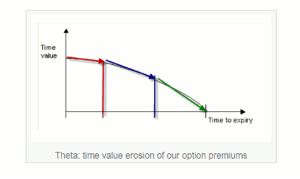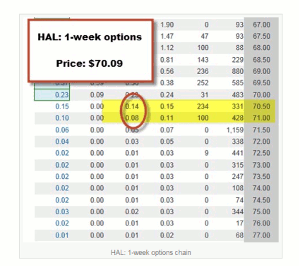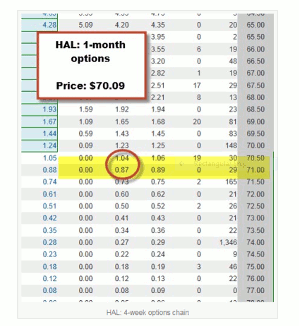Alan Ellman of TheBlueCollarInvestor.com explains how learning how to maximize time value by avoiding the impact of theta could greatly improve your overall options trading returns.
Mastering the concepts of the time value of our option premiums and how theta impacts our option profits will help elevate our returns to the highest possible levels. Let’s first define these terms:
Definitions
Time value: The portion of the option premium that is attributable to the amount of time remaining until expiration. It is the amount above any intrinsic value (amount the strike price is in-the-money).
Theta: An estimate of how much the theoretical value of an option will decline with the passage of one calendar day.
As option sellers, we capture the entire premium once the trade is executed. The option buyers now own a decaying asset that is losing time value every day. Once again, the cash generated from the sale of the call options we sell is in our account and the amount we capture cannot be diminished. Another point to remember is that the initial profits generated from the sale of the call options is measured in time value only, not intrinsic value if we sold an in-the-money strike. So, if we bought a stock for $32 and sold the $30 call for $3, of that $3, $2 is intrinsic value (not profit) and $1 is time value, our initial profit.
Since our motivation is to generate monthly cash flow in a low-risk fashion, let’s focus in on maximizing time value by avoiding the impact of theta. One of the characteristics we need to be aware of is that time value erosion (theta) is logarithmic in nature—not linear—especially for near-the-money strikes. This means that the time value component of our option premium starts to erode slowly at first and then more rapidly as we approach expiration Friday, as shown below:
Taking advantage of theta
Sell the options early in the 1-month contract: By doing this, we will be avoiding the impact of the logarithmic nature of the time value erosion of our options which start declining in value slowly but then falls off a cliff later in the contract.
Weeklys versus monthlys: There are pros and cons to both but from the perspective of time value and theta let’s view the 1-week and 4-week options chains for (HAL) captured in the first trading week of August, 2014:
If time value were linear (straight line) then we would expect the option value of the 1-week options to be 25% the value of the 4-week option values but that is not the case:
$70.50 call: $0.11/$1.04 = 10.6%
$71 call: $0.08/$0.87 = 9.2%
Now there are exceptions to these general rules when the market is anticipating a more volatile movement in share price in the near-term due to some upcoming event. However, understanding how theta impacts time value, in most cases, is an important concept to master in order to achieve the highest possible covered call writing returns.
Conclusion:
Understanding the concept of how theta impacts the time value of our option premiums teaches us to enter 1-month contracts early in the contract and explains one of the advantages of monthlys over weeklys.
By Alan Ellman of TheBlueCollarInvestor.com
























